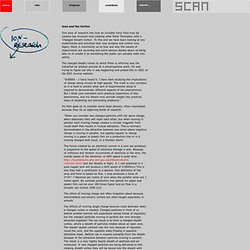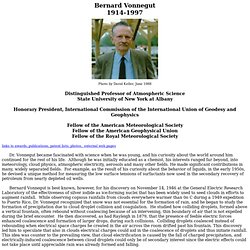

0:01 Patent US7367196 - Spinning cold plasma apparatus and methods relating thereto - Google Patents. The current application claims the benefit under 35 U.S.C. § 119(e) of U.S. provisional patent application 60/546,804, filed on Feb. 23, 2004, which is hereby incorporated by reference in its entirety for all purposes.

The present invention relates to an apparatus and method for generating a spinning cold plasma. In another aspect, the invention provides methods for using the spinning cold plasma (SCP) including localized disinfecting of microbiological germs, treatment of surfaces (particularly delicate materials) in preparation for printing, treatment of coatings and enamel materials for dental applications, sterilization of packaging materials and medical/surgical equipment, surface modification of composites, and the like. An apparatus for generating a spinning cold plasma is disclosed. A preferred embodiment of the apparatus is portable and includes a generally cylindrical vortex tube, a collar, a plurality of valves, and an ionizing device.
0:07 Kapton. Structure of poly-oxydiphenylene-pyromellitimide Kapton insulating pads for mounting electronic parts on a heat sink Kapton tapes, three rolls of different widths Kapton is a polyimide film developed by DuPont that remains stable across a wide range of temperatures, from −269 to +400 °C (−452 – 752 °F / 4 – 673 K).[1] Kapton is used in, among other things, flexible printed circuits (flexible electronics) and thermal micrometeoroid garments (the outside layer of space suits).

The chemical name for Kapton K and HN is poly (4,4'-oxydiphenylene-pyromellitimide). It is produced from the condensation of pyromellitic dianhydride and 4,4'-oxydiphenylamine. Usage[edit] Aircraft[edit] Kapton-insulated electrical wiring has been widely used in civil and military aircraft because it is lighter than other insulators and has good insulating and temperature characteristics. Spacecraft[edit] X-ray[edit] 3D Printing[edit] 0:04 Active Vortex Generators Using Jet Vectoring Plasma Actuators. Vortex generators, both active and passive, have been shown to be useful flow control devices on aircraft for both separation control and to maintain uniform flow over sections of the wing by energizing the boundary layer, particularly control surfaces.

Meanwhile, plasma actuators have been used to delay separation by adding momentum to the boundary layer. Linear plasma actuators have been shown to be an effective arrangement of the plasma actuator for several applications of aerodynamic flow control, primarily separation. The annular plasma actuator, or plasma synthetic jet actuator (PSJA), has also been shown to be effective as a zero net mass flux jet. Similar to the annular plasma actuator, the linear thrust vectoring plasma actuator can be used to create a wall-normal jet, but with vectoring capability. 0:05 Going's on of Otto's Pastimes: Plasma Actuator Airfoil Wind Tunnel Testing.
This week I built a Plasma Actuator in the shape of a crude airfoil and tested it in my Homemade Wind Tunnel.

Plasma Actuators are research devices that use an electric field to change the characteristics of gas flow near a surface. In this experiment I was trying to get the airflow over the top of the airfoil (wing) to adhere to the surface of the airfoil when it normally wouldn't. Separation of the airflow over the top of a wing causes the lift generated by the wing to be reduced resulting in a stall. Before I talk more about what I built let me put a couple of pictures that I took from my experiment to help explain what I'm writing about. 0:00 Plasma actuator. Glow of plasma actuator discharges Introduction[edit] Plasma actuators operating at the atmospheric conditions are promising for flow control, mainly for their physical properties, such as the induced body force by a strong electric field and the generation of heat during an electric arc, and the simplicity of their constructions and placements.

0:00 VandeGraaff generators: Electrostatics, "Static Electricity," and humidity. W.

Beaty 1997 Electrostatic design is something of a "black art" because there are numerous little-known rules which only become important at high voltage. Below are a few of them. Don't let these rules scare you off from building a device. Many projects work fine the first time. See also: Solving Humidity Problems and debug your VandeGraaff Some types of static electric generators can only supply an extremely tiny current.
0:01. 0:01 Charge sheath vortex basics. 0:00 Plasma Demonstration - Flow. 0:01 Ions and the Vortex. One area of research into how an invisible force field may be created has involved ions creating what Peter Thompson calls a ‘Charged Sheath Vortex’.

To this end we have been looking at any experiments and activities that may produce and control ions. Again, there is uncertainty as to how and why the results of experiments are occurring and some serious doubts about us being able to re-create it as something the public can actually walk into safely. The charged sheath vortex to which Peter is referring was the industrial by-product process at a polypropylene plant. He was trying to figure out why it was happening and posted this in 2001 on the ESD Journal website: “EUREKA – I have found it.
He then goes on to consider some basic physics, often overlooked because they sit on adjoining fields of research. 0:07 John Searl Story - SEG Theory of Operation - See Information in the Video Description. 0:02 Homemade Lenard Tube (Ion / Electron Gun) 0:00 BBC News - How to make clouds indoors: The art of Berndnaut Smilde. 0:08 Bernard Vonnegut. Bernard Vonnegut1914-1997 Photo by David Keller, June 1988 Distinguished Professor of Atmospheric ScienceState University of New York at Albany Honorary President, International Commission of the International Union of Geodesy and Geophysics Fellow of the American Meteorological SocietyFellow of the American Geophysical UnionFellow of the Royal Meteorological Society links to awards, publications, patent lists; photos, external web pages Dr.

Bernard Vonnegut is best known, however, for his discovery on November 14, 1946 at the General Electric Research Laboratory of the effectiveness of silver iodide as ice-forming nuclei that has been widely used to seed clouds in efforts to augment rainfall. Since there was little evidence to support the precipitation idea, Vonnegut began his own speculations as to how clouds become electrified. With associates, Vonnegut invented, designed and built instruments for his studies. In 1967, after 15 years of productive scientific activities at Arthur D. 0:09. 0:01 Tornados as Electric Discharge. Because the Earth is a small charged body moving in a large cell of plasma, explanations of all physical phenomena in, on, and near the Earth must take the electrical behavior of plasma into account.

Taking this larger picture into account will add new insights for understanding details of everyday phenomena, such as the weather. Meteorologists are not sure how tornadoes form but they do know that they are often associated with severe electrical storms. Horrors of magnetism 3. Horrors of Magnetism-3A.D.

Rudnev The first 2 lessons of horrors explainably have not caused interest in readers. But without it was impossible to start this section. But now we have the right to state a difficult material without thinking about that, - how the modern science sees these matters. 1. Magnetohydrodynamic drive. The Yamato 1 on display in Kobe, Japan. The first known working prototype. The front of the Yamato 1 A MHD thruster from the boat, at the Ship Science Museum in Tokyo. A view through a tube in the thruster off Yamato I, at the Ship Science Museum in Tokyo. The electrode plates are visible top and bottom. Magnetohydrodynamics. The sun is an MHD system that is not well understood.
The fundamental concept behind MHD is that magnetic fields can induce currents in a moving conductive fluid, which in turn creates forces on the fluid and also changes the magnetic field itself. The set of equations which describe MHD are a combination of the Navier-Stokes equations of fluid dynamics and Maxwell's equations of electromagnetism. These differential equations have to be solved simultaneously, either analytically or numerically. History[edit]